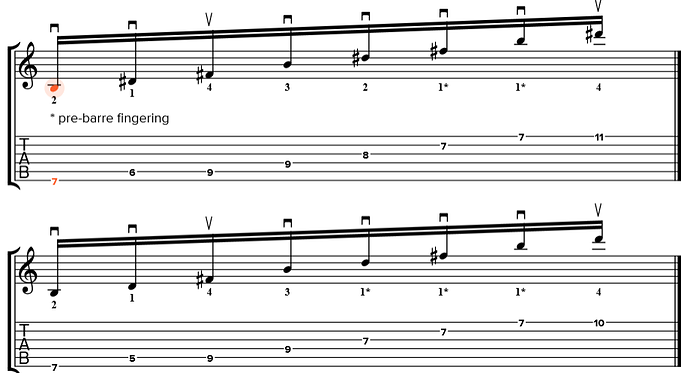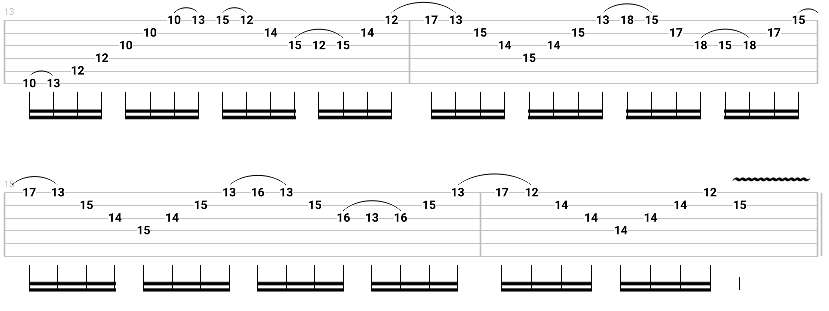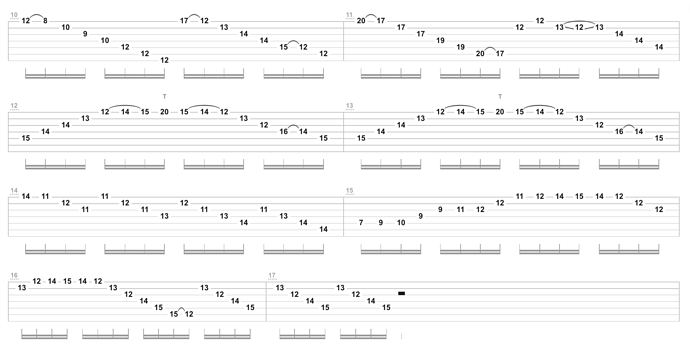Decided to make this thread because I was messing around with sweeps today, having neglected them for a long time, and had a little interesting breakthrough that I don’t fully understand, and anyway it was interesting to try and re-analyse them armed with new insight into stuff like pickslanting that I wasn’t aware of before.
I’ve always found shapes like these relatively easy:
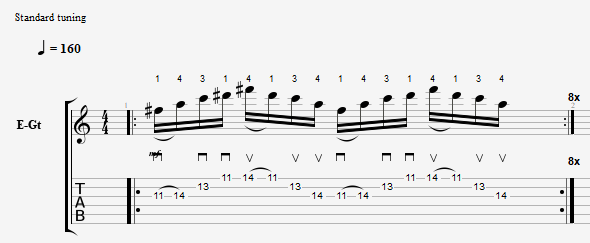
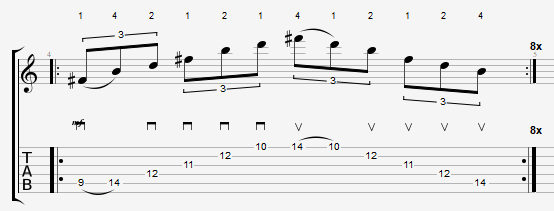
as in there was never any ‘roadblock’ in learning them, I simply gradually got faster and cleaner with practice. Obviously these are all 2-way pickslanting. I realised that I can handle almost any shape with this kind of 3-note turnaround on one string, I think because it gives you plenty of time to rotate the pickslant.
But I always had trouble with this kind of thing:

and trying to narrow down where the problem was, its that single note on the D string that throws my pick into chaos. I think its swiping through the D string with an upstroke on the way down which messes up the timing and everything.
Today I randomly tried it out starting on an upstroke like this:
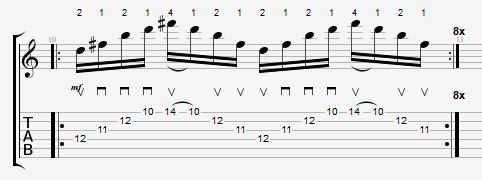
and it instantly just clicked and felt smoother and better, although it feels weird to have an upstroke on the downbeat. I don’t really get it, this is inside picking and I usually find outside easier. Looking forward to getting a camera on this eventually to see what’s going on.
I kind of forgot where I was going with this thread. Any similar experiences / anyone else struggle with these kinds of one-note turnarounds?

